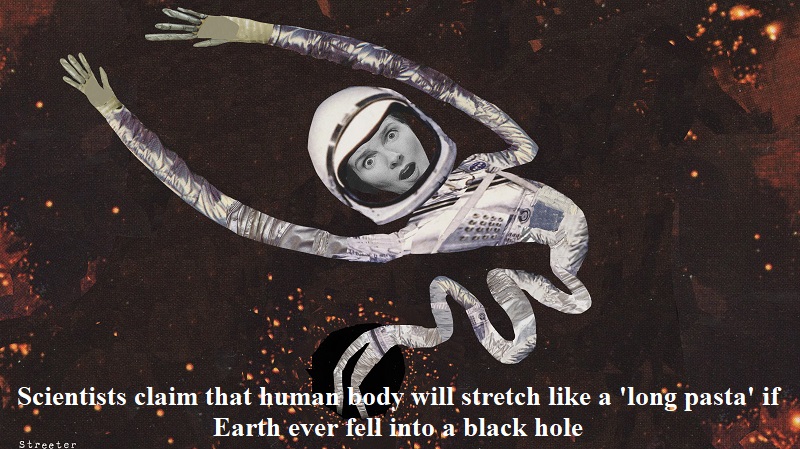
Scientists have suggested that if Earth were to fall into a black hole, known for its powerful gravity that even light cannot escape, the human body would likely be stretched into the shape of “long pasta.”
Black holes have a reputation for devouring surrounding matter, including planets and even other black holes. Due to their destructive nature, they can tear apart stars and consume anything that comes within their reach. With light trapped inside, Earth would have little chance of escape if it were to fall into a black hole.
Professor Xavier Calmet, a physics professor at the University of Sussex, explained to the Daily Mail that the gravitational force of a black hole would be so strong that humans would experience “spaghettification.”
He stated, “Your body will be stretched into a shape similar to that of long pasta until it is torn apart by the strong gravitational force. I can’t imagine that this would be pleasant – it would happen rather quickly, so if painful, it is unlikely to last long.”
Dr. David L Clements, a senior lecturer at Imperial College London, added that the end of Earth would likely be swift if it were to fall into a black hole. Asphyxiation could occur if the atmosphere is stripped, or the process of spaghettification could stretch everything out into long strings, albeit momentarily painful.
Fortunately, the chances of Earth being swallowed by a black hole are nearly zero, according to Dr. Clements. He explained that the fact that Earth still exists shows that such an event has not happened throughout its history. The nearest black hole to Earth, known as Gaia BH1, is approximately 1,600 light-years away and is ten times larger than our sun.
In other news, the James Webb Space Telescope (JWST) in Cycle-2 is poised to investigate the mysteries of black holes. Astronomers will utilize the telescope to study black holes, searching for runaway supermassive black holes, understanding the impact of active galactic nuclei feedback on star formation, and exploring the obscured growth of supermassive black holes during the Epoch of Reionisation. JWST will focus on observing the black hole at the center of the Milky Way galaxy, known as Sgr A, to gain insights into the inner accretion flow and the formation of black holes.

Post Your Comments